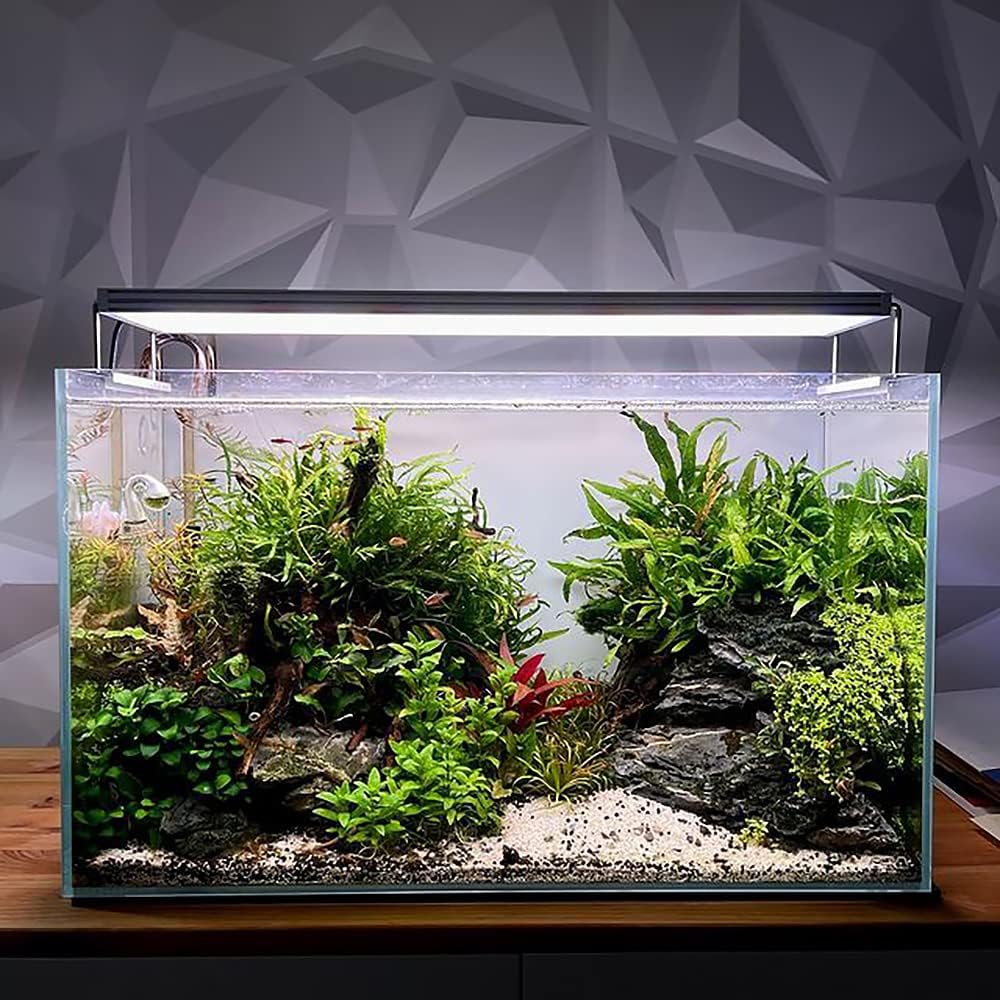The Java Fern, a popular aquatic plant in the aquarium realm, is renowned for its resilience and distinctive appearance. Often a top choice for both novices and experienced aquarists, the Java Fern adds a touch of elegance to any aquarium setup.
Despite its popularity, one of the most common questions we see on this aquarium plant is, “How much light does Java Fern need?”. Understanding its light requirements, along with other care considerations, is vital for anyone wanting to integrate this versatile plant into their aquarium.
So, let’s waste no further time and dive into the plant’s optimal lighting conditions, the benefits of using it in your aquarium, and some of the challenges you may face.
Ideal Lighting Conditions for Java Fern
Java Fern is known for its adaptability, especially when it comes to lighting. This plant thrives in low to medium light conditions, requiring only about 8 to 10 hours of light per day. This relatively low light requirement makes it an ideal plant for beginners or for aquariums where lighting conditions are not intense.
In environments with high lighting, Java Fern can still survive, but it might experience issues like algae growth on its leaves. To mitigate this, it’s advisable to provide some shade using other plants or aquarium decorations.
Benefits of Java Fern in Your Aquarium
Adding Java Fern to your aquarium comes with several advantages:
- Ease of Care: Java Fern’s low light and minimal care requirements make it a perfect plant for beginners.
- Aesthetic Appeal: With its long, green leaves and unique growth pattern, it adds a natural and wild look to aquariums.
- Water Quality Improvement: Like other aquatic plants, Java Fern helps in absorbing toxins like nitrates, thereby improving the overall water quality.
- Provides Shelter: Its leaves and roots offer hiding spots for fish, especially fry and shy species.
Growth and Maintenance
Java Fern is a slow-growing plant, which is part of its appeal as it requires minimal maintenance. When it comes to water parameters, it’s quite flexible. The plant does well in a wide range of pH levels (6-7.5) and temperatures (68-82°F or 20-28°C).
Unlike many aquatic plants, Java Fern should not be buried in the substrate. Instead, its rhizome (the horizontal stem from which the leaves grow) should be attached to rocks or driftwood. Over time, the plant’s roots will naturally adhere to these surfaces.
Aquascaping with Java Fern
In aquascaping, Java Fern is highly versatile. It can be used as a background plant in smaller tanks or as a mid-ground plant in larger setups. Its unique growth pattern allows it to be used creatively – attached to driftwood or rocks, it can create a ‘tree-like’ appearance or a natural wall of green.
Challenges in Growing Java Fern
While Java Fern is hardy, it’s not completely without challenges. It’s sensitive to high levels of certain nutrients, like phosphate and nitrate, which can lead to black spots on its leaves. Additionally, if the rhizome is buried in the substrate, the plant may rot and die.
Conclusion
In summary, Java Fern is an excellent choice for almost any aquarium due to its minimal light and care requirements. It thrives in low to medium light conditions for about 8-10 hours a day. This plant not only adds a unique aesthetic to the tank but also plays a role in maintaining a healthy aquatic environment. Its adaptability to various water conditions and ease of maintenance makes it particularly suitable for beginners. With its ability to improve water quality and provide shelter, Java Fern is more than just a decorative addition – it’s a functional, living element of your underwater ecosystem.
